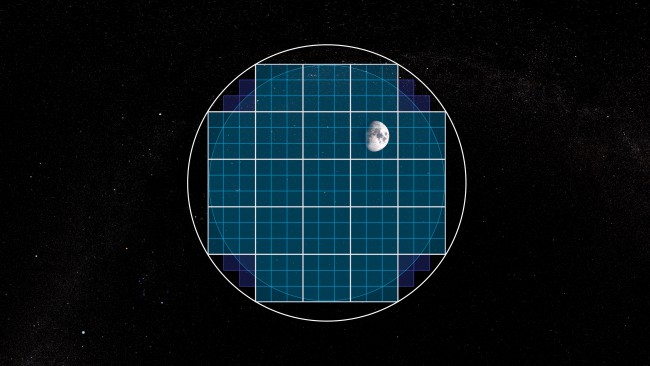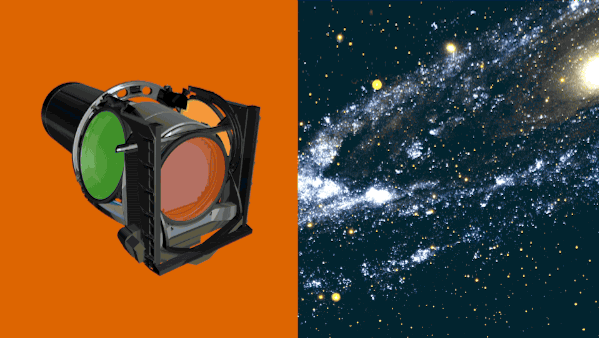In one shot, the Large Synoptic Survey Telescope's 3.2-gigapixel camera will capture an area of the sky 40 times the size of the full moon (or almost 10 square degrees of sky). LSST's large mirror and large field of view work together to deliver more light from faint astronomical objects than any optical telescope in the world. Credit: SLAC National Accelerator Laboratory
The Department of Energy has approved the start of construction for a 3.2-gigapixel digital camera – the world’s largest – at the heart of the Large Synoptic Survey Telescope (LSST). Assembled at the DOE’s SLAC National Accelerator Laboratory, the camera will be the eye of LSST, revealing unprecedented details of the universe and helping unravel some of its greatest mysteries.
The construction milestone, known as Critical Decision 3, is the last major approval decision before the acceptance of the finished camera, said LSST Director Steven Kahn: “Now we can go ahead and procure components and start building it.”
Starting in 2022, LSST will take digital images of the entire visible southern sky every few nights from atop a mountain called Cerro Pachón in Chile. It will produce a wide, deep and fast survey of the night sky, cataloguing by far the largest number of stars and galaxies ever observed. During a 10-year time frame, LSST will detect tens of billions of objects—the first time a telescope will observe more galaxies than there are people on Earth – and will create movies of the sky with unprecedented details. Funding for the camera comes from the DOE, while financial support for the telescope and site facilities, the data management system, and the education and public outreach infrastructure of LSST comes primarily from the National Science Foundation (NSF).
The telescope’s camera – the size of a small car and weighing more than three tons – will capture full-sky images at such high resolution that it would take 1,500 high-definition television screens to display just one of them.
The LSST's camera will include a filter-changing mechanism and shutter. This animation shows that mechanism at work, which allows the camera to view different wavelengths; the camera is capable of viewing light from near-ultraviolet to near-infrared (0.3-1 μm) wavelengths. Credit: SLAC National Accelerator Laboratory
Read more at: http://phys.org/news/2015-08-world-powerful-digital-camera-green.html#jCp


